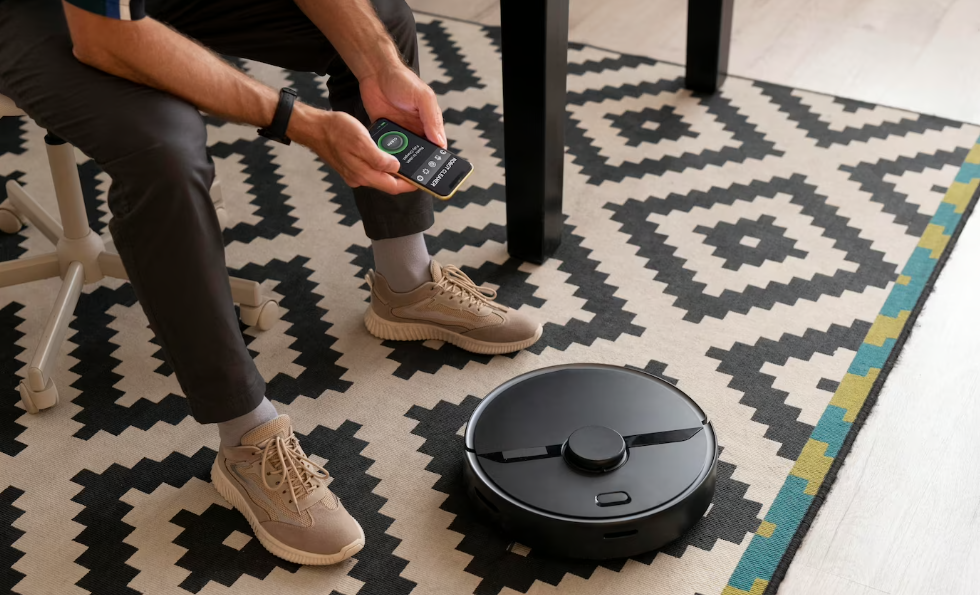Smart Mapping and AI Integration: How Robot Vacuum Cleaners Navigate Your Home
In our life full of exciting events, homeowners search for the most efficient devices for automatic cleaning. In the last few years, robotic vacuums have become the easiest and the most convenient helper for hard floor and carpet cleaning. The result of the first robotic cleaners was poor, but with modern technologies of smart mapping and AI navigation systems, robotic cleaners manage to clean without guidance.
Modern cleaners have numerous sensors to avoid obstacles and stairs, can map your house, and define no-go zones. However, many new words, such as SLAM and LiDAR navigation, can puzzle users. Unfortunately, the price of robotic cleaners depends significantly on the types of navigation systems. Therefore, it is essential to understand the necessity of each system to meet your budget and needs.
So, in this article, we will briefly describe the robot’s navigation system and help you choose the best for your house.
Navigation systems of robot vacuum cleaners
Modern robots combine several navigation systems, so it is better to be familiar with all and understand which ones are old-fashioned and new.
Sensors mapping or smart mapping
Navigation based on sensors is the basic one, appearing with the first robotic cleaners. But still, all robot vacuums have different sensors to find their cleaning path at home. Mostly each robot has several sensors of one type from different sides.
The most common sensors are:
- drop detectors to prevent robots from falling down stairs or other barriers, as it may cause significant damage;
- wall sensors to help robots clean the space near the walls, especially tight angles; these sensors also help to clean one room after another;
- obstacle sensors to prevent robots from trapping in the cables or toys; they will clean around;
- dirt sensors for cleaning the dirtiest places in several rounds or more powerful modes;
- carpet sensors to change cleaning mode or to avoid them depending on the model (mopping robotic cleaners do not mop carpets);
- battery sensor to estimate the required time for cleaning and return to the base unit (power unit) on time;
- optical sensor for room and route mapping, measuring distance.
With AI integration, the most intelligent robots collect all information from sensors and create the cleaning map with the shortest cleaning cycle and the most effective routes. Without AI, the set algorithms are used for cleaning.
These algorithms plus sensors still are the most popular navigation systems, and it is called a random navigation system used by various manufacturers of budget cleaners. But, unfortunately, it is not efficient.
Camera mapping
One of the latest advantages of robot technology is a camera. Robots may use the built-in camera for navigation and security to check for any issues at home or even talk with your pets. The camera is always mounted on the top of the robot.
Unfortunately, camera mapping has a significant downside as night navigation and misses a mess on the dark floor. Some robots have lights adjusting their brightness depending on the quantity of light in the room. Camera mapping is usually combined with SLAM.
Gyroscope navigation
Gyroscope also calculates the distance to any obstacles, including furniture and walls. It is not as effective as Lidar or SLAM but is used in budget cleaners.
SLAM (Simultaneous localization and mapping)
The robot with SLAM can create a map of your house and show the cleaning progress in the smartphone application. This feature also helps to clean separate rooms or areas. SLAM uses a camera or LIDAR for mapping and moving sensors for its work. AI is used in this navigation system as well; it has the description of the dirtiest places and most used places (doorways, kitchen). AI guesses what type of room it is cleaning and chooses the correct mode.
LiDAR (Light Detection and Ranging)
The most advanced and the latest achievement on the market, this navigation system uses multiple lasers to find obstacles and measure distance to them. The laser spins 360 degrees and detects all obstacles on the level of the laser. The maps made using the LIDAR system are the most precise and the quickest. However, it has some limitations in the size of the obstacles; sensors in this regard are more effective. With LiDAR, robots mainly go in straight lines instead of random. Also, LiDAR robots work without problems at night.
Benefits of smart mapping AI integrations

The advantages of intelligent mapping and AI integration in the home cleaning industry are numerous. They allow for cleaner and more efficient cleaning. Smart mapping devices will help you navigate your home and clean spaces that require attention. So, you can now easily define the advantages of each navigation system and not choose an overpriced model. While reading reviews on robot vacuum cleaners, we suggest starting with their navigation systems.
There are some differences between LiDAR and camera robots, but both do smart mapping with AI integration. The researchers have shown that robots with LiDAR navigation clean 20-30% faster than those with cameras and SLAM. To create a map, a camera-based robot needs two-three runs, while the competitor, a robot with LiDAR, can do it in one run. But VSLAM robots clean better over false barriers such as curtains, where a LIDAR robot does not go.
The more expensive robots that can even avoid pet popups are a combination of LIDAR and camera mapping. As with the camera, the robot can collect more data about the house and analyze them better with AI. In addition, AI is utilized to boost the devices’ capabilities for cleaning, making their use more effective and efficient. For instance, AI-powered appliances can detect the voice command, understand your cleaning habits and adjust to the changes in your home’s surroundings. In the end, these robotic cleaners have more functions.
Conclusion
The robot vacuum has changed the cleaning of our homes. Their smart sensors, mapping technology, algorithms, and obstacles-avoiding capabilities provide efficient and effective cleaners. Knowing how robot vacuum cleaners move around your house can help you select the ideal equipment for your needs. AI technologies with sensors, LiDAR, and cameras are used to create maps allowing them to maneuver through various rooms and avoid obstacles. The algorithms are constantly learning and adjusting to your lifestyle. A short cleaning path helps to save battery and make the complete clean in a shorter time. Depending on the complexity of your house, possible obstacles, and the size of your rooms, you can significantly save money without paying too much for functions you do not need.



